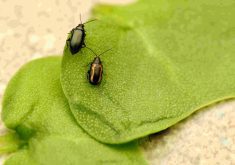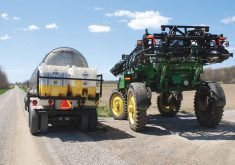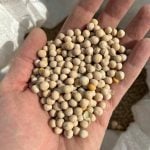Reduced area and agent treatments (RAATs) may be a way to control grasshoppers and keep costs down in the coming year, entomologist John Gavloski told producers at St. Jean Farm Days on January 8.
Gavloski, an extension entomologist with the province, showed grasshopper count maps from the last few years, which show a steady increase in populations of the pest. He said another hot, dry spring could build numbers even more. A wet fall and early snowstorm aren’t likely to have hit populations as they overwinter as eggs which are very resilient.
Read Also

Journal pulls long-cited glyphosate study for ethics violations
The journal Regulatory Toxicology and Pharmacology has retracted a 2000 Monsanto-linked glyphosate review, drawing new scrutiny as Bayer faces mounting legal pressure.
RAATs reduce the amount of insecticide used by alternating treated swaths with untreated strips. The practice has been used on pastures and rangeland for years in the U.S., Gavoloski said.
“RAATs work through chemical control, meaning grasshoppers are killed in treated swaths and as they move out of untreated swaths, and conservation biological control, which allows insect predators and parasites preserved in untreated swaths to continue to prey on grasshoppers,” writes Scott Schell, an extension entomologist from the University of Wyoming.
Grasshoppers aren’t completely eradicated, he writes, but this isn’t the goal as leaving some as food for other animals is better for the environment.
Schell said the technique can cut the applied amount of insecticide in half.
For RAATs to be successful, producers must determine when pest grasshoppers are hatching and treat them while nymphs are less than half an inch (1.25 cm) long, said Schell.
It’s the most economical way to control grasshoppers on pastures, Gavloski told the Manitoba Co-operator, but in Canada, RAATs aren’t as well known.
He said he’s spoken on the practice from time to time, but hasn’t seen a lot of interest unless grasshoppers are an imminent threat.
In theory, the technique would also work on cereals, Gavloski said. The studies are lacking, however.
“I’d be really happy if somebody would kind of duplicate those studies in other commodities,” he said.
Gavloski said applying pesticide to the edges of fields may also work for grasshoppers, catching them as they enter the fields from ditches and fencerows.
















